Creating lasting value in a changing world
Our three annual trend reports offer a comprehensive view into the future of business, technology (Technology Vision) and people (Fjord Trends).
Out of global crisis comes a new world of opportunities.
This past year, business models have been reinvented. Supply chains have been restructured. Promises of new scientific breakthroughs have been suddenly realized. Productivity, we now know, can thrive virtually.
In the process of tackling global challenges that even the most forward-thinking leaders never fathomed, organizations have transformed.
How do we capitalize on this new momentum? How do we accelerate the innovation we have tapped? How do we optimize for the new global reality?
Business Futures is Accenture’s structured approach to identify Signals of business change that are most critical for organizations to understand in order to shape successful futures.
We highlight the Signals that are reshaping organizations globally and will be critically important as these organizations reinvent for a profoundly different tomorrow. In presenting these Signals, we aim to help leaders chart their best courses to profitable growth.
The Signals present opportunities—and incentives—to embrace change and find new ways to grow.
Six signals stood out as essential to the
future success of organizations:
Learn more about how we arrived at these signals in the blog
"Why we can't predict the future of business, but we can foresee it better"How can you make sense of the new global reality and chart ideal paths toward a better future?
Follow the six Signals to find out what's going on, why it matters, and what to do.

Organizations are using data analytics and artificial intelligence to make decisions and define strategies that anticipate the future.
Rather than focusing on the past for insights, organizations are increasingly looking forward.
Rapid shifts in operating environments and human behavior mean that the historical correlations some analytical models rely on have been challenged. To find new patterns in data and better anticipate future decisions, new data sets—including real-time data from across the value chain—are being processed by new analytic approaches based on artificial intelligence (AI).
We call this enhanced approach to decision-making "learning from the future."
Taking an expansive view allows enterprises to make decisions faster and with greater confidence, and to tackle previously intractable challenges.
Developing superior forward-looking
capabilities creates opportunities
for organizations to stay one
step ahead:


Learning from the future can open up new growth opportunities—an area companies often struggle to get right. We found, for instance, that only 31% of the executives in our survey said they are completely confident in their ability to foresee, and respond to, behavioral changes that affect demand.
New sources of data and AI-driven models can be applied across companies’ product development and sales life cycles to give them greater confidence that they are on the right path to growth.
At the same time, learning from the future can help companies prepare for risks. Engineers, for instance, are applying AI to leading indicators to make infrastructure more resilient against climate change.
Leaders understand the importance of learning from the future, even as they struggle to do it well.
88%
of C-suite respondents to our survey said that using more forward-looking data sets and analytic approaches to better predict and respond to future events will be important to their success.
Companies are not being held back by technology: Improved access to diverse sources of granular data and advances in modeling techniques mean that the right predictive tools are increasingly available. Instead, organizations are being held back by mindset, cultural, and organizational constraints—and their approaches to decision-making.

Organizations can take a clean-sheet approach to dynamic planning, drawing on both inductive AI-driven insights and creative thinking about what the future may hold. Instead of asking, for example, “What would we do if our servers went down?” firms might ask, “What would we do if there were no servers at all?”

Because no one knows what particular pieces of data will ultimately turn out to be important for predicting different events, there is no such thing as valueless data. Organizations that take a wide-angle approach to data use, tracking hundreds of variables or more, can better inform their algorithms.

Organizations that shift from experience-based, top-down decision-making to data-driven, bottom-up decision-making—where employees augment their judgment and intuition with algorithms’ recommendations—will excel at learning from the future.
77%
of survey respondents have increased their use of both internal and external real-time data over the last 12 months.
No matter how far AI advances, humans will always be needed to interpret algorithmic data, explain it, and make sure that it reflects the intent.

Leaders are pushing decision-making authority to people at the “edges,” relying on highly networked teams to act with speed and agility.
Edge organizations leverage the principles of edge computing, a decentralized form of computation and data storage that speeds up processing by moving intelligence closer to the point of use.
Edge organizations are formed by moving decision-making to the edge, where teams are connected by networks and are empowered to decide how to organize, work, meet corporate goals and deliver on the mission while optimizing for local performance.
Although many organizations have long strived to become edge organizations, seeking to “think globally but act locally,” several factors have aligned to make edge a growing reality today.
Vast improvements in technologies have enabled greater connectivity and securely managed information flows, helping organizations overcome the constraints of distance. The pandemic—which triggered the biggest experiment in remote working at scale—has shown that it is indeed possible to collaborate well at a distance.
Meanwhile, growing fragmentation and changing consumer preferences have made moving decision-making authority to the edges not just possible, but necessary.
When companies empower their edges to make most day-to-day operational decisions, they free up their headquarters to focus on key strategic decisions.
Applying the logic of edge computing
to operating models offers valuable
opportunities for businesses:
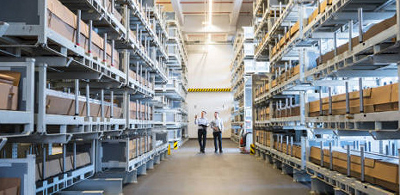

Organizations expect trade to become further regionalized in the years ahead.
82%
of C-suite respondents to our survey said that operating more like a broad federation of enterprises to respond to increasingly fragmented business environments will be important to their organization’s success.
At the same time, consumer-loyalty dynamics have shifted. Today, the challenge for organizations is not just that customer preferences are uncertain; it is also that preferences are changing differently in different markets.
Organizations that push decision-making authority to the edges will be best positioned to meet these ongoing changes.
The need for adaptability and speed―while effectively managing costs―will not end with the pandemic.

As business environments become more complex, many companies have grown similarly complex organizational structures. Edge organizations are structured in ways that make them flatter and faster. They shift away from conventional hierarchies toward networked structures built around empowered, multidisciplinary teams that are centered on customer outcomes.

The pandemic has highlighted what is possible when decisions are made quickly. By delegating the great majority of decisions to be made as locally as possible, organizations will give employees at the edges the agency and accountability for the decisions they are equipped―and best placed―to make.

Redesigning structure and decision-making processes requires rethinking the skills of the workforce. The move to empowered multidisciplinary teams requires people to take on more complex roles that combine tasks once performed by people in two or more traditional roles.
71%
of survey respondents have already decentralized, or are planning to decentralize, decision-making in parts of their business.
Business leaders will need to consider how to devolve control in ways that allow headquarters to maintain clear communication with—and sufficient coordination of—the edges of the organization.

Organizations are building sustainability into the fabric of their operations—and making social responsibility sustainable.
There is a growing consensus that the interests of both society and investors are best served by organizations that focus on multi-dimensional value creation for the benefit of all their stakeholders, not just shareholders.
Despite executives’ acknowledgement of the value of stakeholder-driven corporate purpose, some organizations are struggling to match their rhetoric with results: We call this the “intention-delivery” gap.
Our research found that for 43% of 521 of the world’s largest companies, their ability to deliver multi-dimensional value does not match their intent.
These companies devoted an above-average share of their earnings calls to environmental, social and governance (ESG) topics, but their actual performance on ESG indicators was consistently below average over the past three years.
The pandemic has highlighted and exacerbated long-standing inequities both between individuals and between industries and countries.
Among advocates of an authentic stakeholder-centric purpose, there is growing frustration that many organizations are struggling to hit their targets. Pressure on organizations to close the intention-delivery gap will only intensify as stakeholders increasingly hold companies accountable if they fail to deliver on purpose.
Now is the time for companies to embrace the opportunities in becoming purpose-run:


Our research on responsible leadership showed that companies that consider the impact of their actions beyond their balance sheets exhibit stronger financial performance.
Companies with high ratings for ESG performance had operating margins 3.7x higher, on average, than those of lower ESG performers. They also generated higher annual total returns to shareholders, outperforming lower ESG performers by 2.6x.
In the years ahead, the relationship between financial performance and sustainability is expected to grow. Sustainability sits at the heart of new pathways to growth, from circular business models to virtual environments to innovation in the natural sciences.
How do organizations better meet society’s expectations, and go from having good intentions to delivering on them? A playbook is starting to emerge.
A group of “purpose-run” organizations is closing the gap by engineering purpose into the core of their operations, aligning their aspirations with what they measure and manage to what they effect.

Stakeholders have wide-ranging expectations. By attempting to satisfy everyone, organizations may stray too far beyond their core mandates and lose focus.
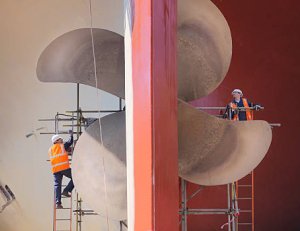
Companies can start by looking beyond shareholder return to measure stakeholder return by disclosing key stakeholders and how they are impacted by the organization’s decisions. Standard reporting frameworks can provide a useful touchstone, but because purpose is unique, the way in which it is measured should be tailored to reflect the goals organizations are trying to meet for their stakeholders.

The challenge for companies is to move beyond merely drafting a purpose statement and associated targets to embedding purpose into the core of their organizations. This embedding starts with the board. While different stakeholder groups may require different levels of engagement, key ones should have, at the very least, a meaningful voice in shaping governance.
96%
of survey respondents said their business processes and their corporate policies incorporate responsible business practices, or will do so within the next three years.
Business leaders will need to take the time to understand―and constantly review―the issues that matter most to different stakeholders while considering how these views vary across markets.
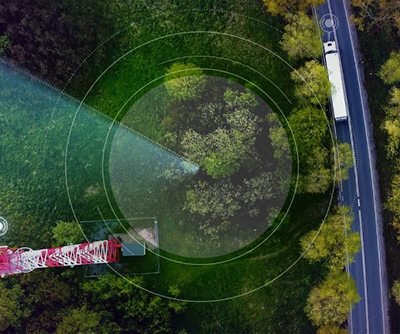
Organizations are restructuring their supply chains and moving production to the point of demand.
Organizations took drastic steps to keep goods moving and customer orders fulfilled throughout the pandemic.
Some changes to order fulfillment proved their value. Expanded use of curbside pickup—nearly 100,000 brands worldwide began offering it during the pandemic—enabled many retailers to earn a margin on what used to be loss-making order fulfillment channels.
At the same time, many pandemic-induced changes have increased the cost of serving customers. Yet despite increased costs, customer expectations are still often not met.
49%
of survey respondents agreed that their organizations are currently meeting customer expectations for order fulfillment.
The organizations that are closest to meeting customer expectations for order fulfillment are taking a holistic approach to their experiments by making interventions across their supply chains.
In the process, these organizations are moving from centralized, linear models of supply to decentralized networks that use on-demand production. We call this new type of supply chain “supply unbounded.”
Breaking the physical limits of their supply chains enables organizations to do more with less, and thereby meet customers’ growing expectations for order fulfillment in a cost-efficient way.
Here are some key opportunities in embracing this approach:

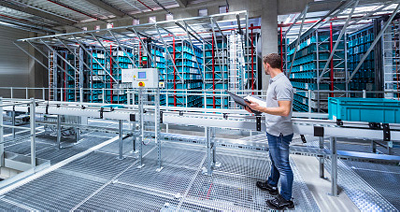
Fulfilling more orders traditionally requires covering more miles, but new technologies—and the business models they enable—can minimize the impact of distance and borders on business.
Route-optimization algorithms are helping reduce mileage and improve on-time delivery rates. In logistics, quantum routing uses cloud-based, quantum computing to calculate the fastest route for all vehicles, taking into account millions of real-time data points about traffic congestion.
In the past, delivering more orders required expanding the footprint of fulfillment centers. By “atomizing” their supply chains into micro-fulfillment centers, organizations can serve more customers from a smaller footprint.
Fulfilling more orders traditionally requires more inventory and, as a result, more waste. Companies can now eliminate excess inventory by shipping and producing what they know customers want—and reusing what they do not want.

Doing more with less requires thinking critically about the role of each node in the fulfillment network. For example, retailers have tended to carry less inventory in their distribution centers by pushing products to stores, resulting in unsold inventory. Inventory could be more effectively managed “upstream,” pooled in port warehouses and pushed out on demand. Alternatively, stores could be used as fulfillment nodes themselves.

As organizations review their fulfillment networks, they can consider not just new demand profiles for the nodes they own, but also how best to work with potential partners, such as local couriers and on-demand delivery firms, to improve their overall supply-chain performance.

Breaking the limits of supply also requires organizations to look differently at the products they send through their networks. In many cases, the design of products needs to be reimagined to make them more amenable to unbounded supply chains. Equally, to take advantage of circular business models, goods can be designed with reuse and remanufacturing in mind at the outset, making use of simpler, recyclable material as much as possible.
Overcoming the physical limits of distance through new technologies could add 9.2% in trade growth in 2030 across 10 economies we studied.
Companies will have to work with stakeholders to identify risks to the livelihoods of vulnerable people in emerging economies and work to mitigate those risks by supporting long-term skills development.
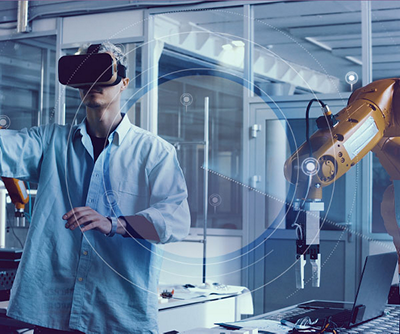
As virtual environments enhance our physical worlds and redefine our sense of place, organizations are creating new ways for people to work, consume, and socialize.
Innovative organizations are working to blend virtual and physical worlds, to build what we call “real virtualities.”
As this integration happens, virtual worlds will become increasingly realistic. Current virtual-reality (VR) technology mostly engages our senses of vision and hearing. Over time, it will engage all our senses. Increasing bits of the physical world will, in turn, have rich virtual interfaces that create “premium” experiences.
Consider how haptics―technology that uses vibration or other motion to create the sensation of touch for the user―is reshaping how the automotive industry builds vehicles.
By 2026, 95% of new cars are expected to have tactile elements, such as steering wheels or seats that vibrate to alert the driver.
Real virtualities will become so ubiquitous that the current distinction between the physical and virtual worlds will gradually blur.
The rise of blended physical and virtual worlds brings opportunities for organizations to create more value for their customers and employees.
Potential benefits of real virtualities include:


Virtual goods are becoming a real source of economic value. Indeed, much of the virtual economy is already situated on massive multi-participant gaming platforms. Many of these platforms have internal economies with proprietary currencies used to buy and sell virtual goods and services.
Virtual realities can also help companies meet sustainability targets: Remote experiences mean less travel, less congestion and lower carbon emissions. In addition, creating realistic 3D images of virtual prototypes could eliminate lots of manufacturing waste.
Technology-enabled worlds could help companies onboard new employees or conduct more lively brainstorming meetings. Reducing hurdles to remote work will allow many more employees to relocate without leaving their employers and will liberate companies to scour the entire world for talent.

The shift to the virtual could change a company’s source of competitive advantage. Organizations will be forced to rethink their existing business models to better blend their virtual and physical offerings.
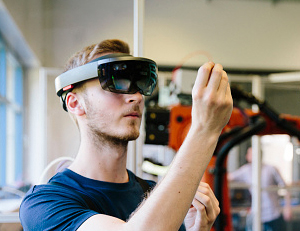
To deliver on their new business models, organizations will need to adapt their people, processes, technology and operations. Organizations will need to rethink how existing roles will adapt to new blended realities. Many new roles will be created, too.

The creation of blended worlds will require collaboration with a wider set of partners to push the boundaries of what organizations can do. Those partners can bring deep expertise, the right technology, or the right opportunity.
88%
of survey respondents said that they are investing in technologies that would enable their organizations to create virtual environments.
As virtual interactions become more sophisticated, organizations must ensure that appropriate safeguards are designed into the real virtualities they create.
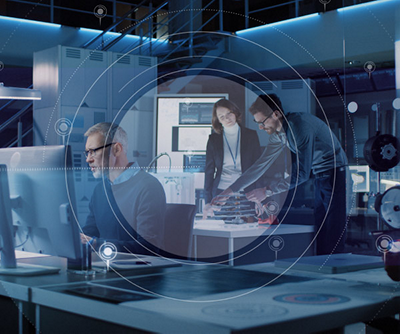
As scientific disruption enables the creation of better, cheaper, and more sustainable products and services, leading companies are becoming scientific companies—and apply science to tackle the world’s fundamental challenges.
mRNA vaccines sit at the convergence of new frontiers in the sciences. Using AI technologies, mRNA vaccines are researched and created running and comparing the results of thousands of experiments in parallel. Production is accelerated by robotics, allowing repetitive procedures to be executed at speed and with high accuracy.
Beyond life sciences, the pandemic has placed scientific innovation firmly back at the top of the agenda for government and business. In the second quarter of 2020, American companies spent more on software and R&D than on fixed assets for the first time in over a decade.
85%
of the C-suite executives we surveyed agreed that increased scientific capability is critical to the future competitiveness of organizations.
In the past decade, every company became a digital company. In the coming decades, every company will become a scientific company to profit from the next wave of innovation.
For businesses, the opportunities extend beyond the opening of new markets and include making them better equipped to more sustainably meet humanity’s food, health and housing needs.
The convergence of the sciences will bring about major opportunities, including:


One example of deep technological disruption is visible in the food system. Food can now be designed from the molecule up, rather than breaking down and reconstituting bulk food products, as is done in food processing.
The “new scientific method” allows organizations to put breakthroughs into real-world use much faster by using digital technologies to accelerate the design-build-test-learn cycle.

Advances in the digital sciences—from machine learning to quantum computing—enable the scientific method to deliver better commercial outcomes. AI-enabled generative design, for example, can identify an optimal product design from a set of defined requirements.

For some companies, operating beyond the confines of digital technologies will require access to highly developed industrial design and manufacturing skills. For others, expanding beyond manufacturing will require the development of new digital capabilities. This reality calls for new models of collaboration that span the sciences and that draw on the expertise of a range of partners.

The infrastructure, skills, and resources required for the next wave of innovation demand substantial funding capacity over an extended period. Not only is the capital intensity higher than for digital product development, the payback periods are also typically longer. Broadening investment vehicles beyond internal R&D efforts will help companies reduce risk.
97%
of survey respondents to our survey said they are using digital technologies to accelerate advances in other scientific areas.
Organizations need to ensure ethical questions are addressed properly to help ensure public opinion does not turn against scientific innovation.
How businesses work:
Signals that relate primarily to changes to operating
models.
How businesses grow:
Signals that relate primarily to changes to business
models.
Critical importance:
Essential to the future success of organizations.
Moderate importance:
Relatively less essential to the future success of
organizations.


Changing of the Guard
Reconsider their approach to leadership development, driven by a multi-generational workforce that is more culturally and geographically diverse.
















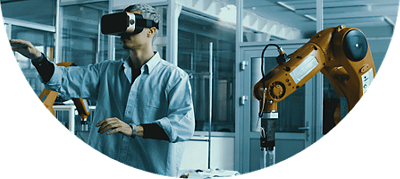









Business Futures Interactive Radar
Discover the Signals most important to you by using the
filters on the side.
Simply choose one filter at a time from the drop-down
menu.
Leaders face an unprecedented challenge: to identify what works for a new and evolving today and what will be required to thrive tomorrow.
Decisions made over the next 12 to 18 months could determine the difference between thriving and struggling to survive in the next five years.
Now is the time to capitalize on changes and seize the future.

Accenture Foresight app
Stay ahead of change – explore our new
thought leadership
app for a personalized feed of insightful
perspectives
that prepare you for what’s to come.
We work together across the globe to make a world of difference.
Our three annual trend reports offer a comprehensive view into the future of business, technology (Technology Vision) and people (Fjord Trends).